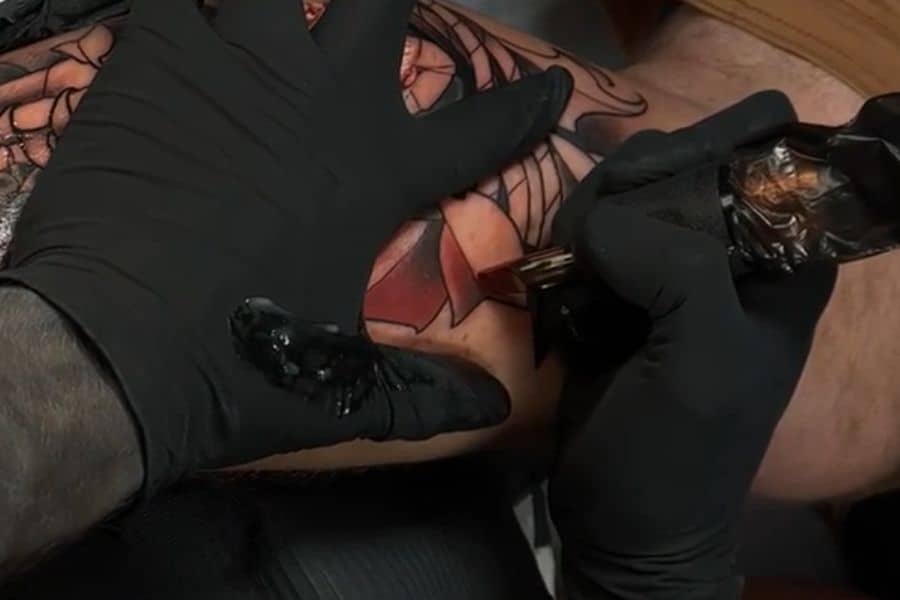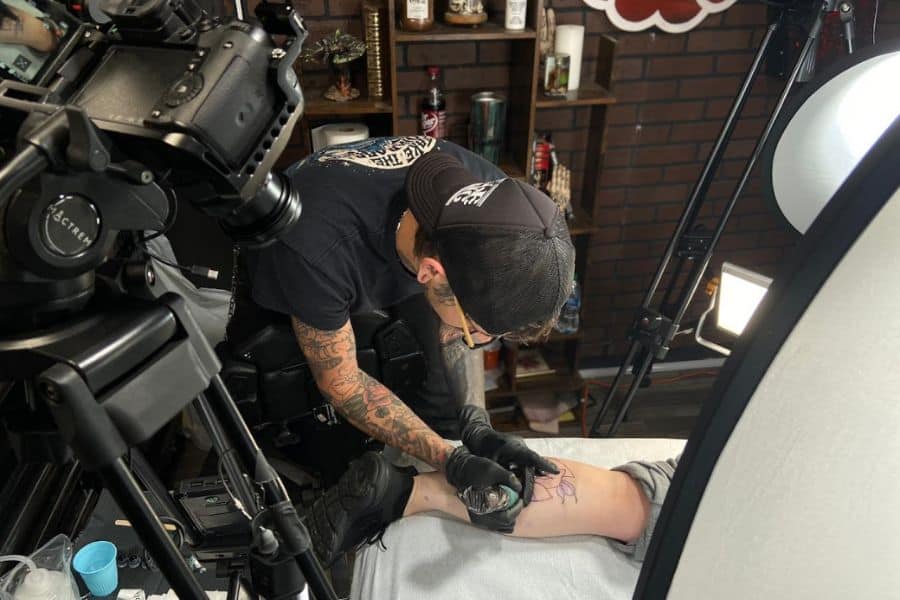Unveiling the Earnings: How Much Do Tattoo Artists Really Make?

Tattooing can often be seen as a mysterious career. As a corner of the art world that remained largely underground until the last decade or so, most clients and newcomers to the craft have questions about the industry – and its profitability.
While most people assume that tattooers fall under the “starving artist” umbrella, many artists will tell you that tattooing is one of the most stable ways to make a living as a creative. So, how much do tattoo artists really make? Is it a financially rewarding career?
In this article, we’ll delve into the various factors influencing tattoo artists’ earnings, including the implications of their employment status, the impact of tips, and how reputation can significantly affect their income. We’ll also guide you through the steps to becoming a tattoo artist, exploring the costs and gains involved in the journey.
Factors Influencing Tattoo Artists’ Earnings
When it comes to the earnings of tattoo artists, there isn’t a one-size-fits-all answer. An artist’s experience, where they live, and even the style they specialize in can make a big impact on the actual amount they bring in each year.

Experience and Skill
Like any profession, experience and skill play a significant role in a tattoo artist’s earnings. Those just starting out in their career can’t command the same rates as a seasoned artist with a broad portfolio and years of experience under their belt.
In fact, most brand-new tattoo artists will only charge what they need to cover the materials used during the tattoo and their most basic costs. At that stage, it’s more important to get practice on people – and you’ll find more willing participants with lower prices.
Geographical Location
The location of an artist’s studio can also dramatically impact earnings. Artists operating in highly populated areas, where demand for tattoos may be higher and clientele wealthier, can often charge more for their services than those in smaller towns or rural areas. However, if the artist isn’t skilled enough to keep up with the extreme competition that comes with a big city like New York or L.A., they’ll struggle to get high-paying clients through the door.
Style and Popularity
Certain styles of tattoos are more popular than others. Realism, for example, is the most popular tattoo style in the world – but it’s one of the hardest to master, and it’s one of the most time-consuming styles. That combination means that great realism artists are able to bring in a much higher income than other artists.
Similarly, if an artist develops a unique style that becomes highly sought-after, their earning potential could increase significantly. In many cases, clients will travel across the world and dish out a significant amount of cash for a piece by that artist.
How Much Do Tattoo Artists Make Per Hour?
The national average tattoo artist salary in the U.S. fluctuates around $40,000 to $50,000 per year at present, though this varies widely. Entry-level artists who are building their portfolio and clientele may earn less, while experienced artists could earn six figures, especially if they have a significant following on social media or specialize in an in-demand style.
Most artists in the U.S. with at least a few years under their belt will charge about $150/hr at the time of writing. However, this doesn’t directly translate to the artist’s take-home pay.
$150/Hr Breakdown
Tattoo artists typically share a percentage of their earnings with the shop owner. Essentially, the artists function as freelancers, and sharing their earnings is how they pay “rent” for the studio space they work in. This percentage can vary, but a 60/40 split is common. This leaves the artist at $90/hr, at which point they’ll take out money for taxes and cover the expenses of doing the tattoo (needles, ink, razors, stencil materials, etc.).
This hourly rate often covers the “unpaid” work done before and after the appointment, like drawing the design, setting up and breaking down their station, etc.
On the flip side, freelance artists operating out of their own studio keep 100% of their earnings, but they also shoulder all the overhead costs—rent, utilities, insurance, and so on.
Benefits, Bonuses, and Alternate Streams of Income
Because tattoo artists usually work as independent contractors, most tattoo shops do not offer any benefits like PTO, health insurance, etc. Some studios might extend a holiday bonus, but again, this is not incredibly common.
However, many tattoo artists are able to use their position in the shop to promote additional streams of income, like selling their own merch, art prints, and the like.
The Celebrity Artist Exception: $1K+/hr
While $150/hr is normal for most tattoo artists, the best tattoo artists out there – for example, those known for their work with celebrities – will charge significantly more. Rates like $500-$1,000 or more per hour are not unusual for big-name artists.
These tattooers often have extra services or specialties that come alongside their rates. For example, artists who tattoo celebrities might get a phone call and fly out the next day for their work. Some artists even collaborate with anesthesiologists to put clients under sedation while they work so that pain is not a factor in the process – a service that drives up the cost significantly.
Do You Tip Tattoo Artists?
In many service industries, tipping is an accepted norm—a way of showing appreciation for good service. The tattoo industry is no exception. Many artists will make a point to say that tips are appreciated but not expected so as not to put pressure on their customers. And while this may be true, a majority of clients tip their tattoo artists.*
Overall, tips are considered a sign of respect and appreciation for the artist’s skill, time, and effort put into the creation of your tattoo. This holds true whether you’re getting a small symbol or a detailed full-sleeve.
*Please note that this refers to tattoo artists in the United States. Some countries and cultures do not tip – with several even considering tips to be offensive. Make sure to do your research on the country’s customs and culture before tipping for your tattoo.
How Much to Tip a Tattoo Artist
A general guideline is 15% to 20% of the total cost of your tattoo, in terms of how much to tip. If you’ve had an exceptional experience—perhaps the artist spent longer than expected perfecting the design, or you felt particularly comfortable and well cared for during the process—you might want to tip more.
If the artist went above and beyond, showing your gratitude through a generous tip can help to foster a good relationship, especially if you plan on returning for more work.

Tattooing 101 Instructor Brandon Over filming a tattoo school tutorial video.
How Much Does it Cost to Start a Tattoo Career?
Becoming a tattoo artist can be a rewarding occupation for people passionate about art and the creative process. And while working as a full-time artist can create great opportunities, the beginning steps of the career can cause financial strain.
How to Become a Tattoo Artist – 3 Steps
Artistic Foundation: A strong foundation in drawing is crucial for tattoo artists, as they will need to listen to client ideas and create a tattoo design from that discussion. Nurturing your artistic skills is the first step. You’ll need to create a portfolio of your best tattoo designs to show shops in order to get an apprenticeship or get hired as an artist.
Knowledge of Safety Standards: Almost every state has laws in place requiring tattoo artists to get their Bloodborne Pathogens Certification. Understanding health and safety standards, including knowledge about skin diseases, infections, and proper sanitization techniques, is crucial to keeping yourself and your clients safe.
Tattoo Education: Whether you get a tattoo apprenticeship or get tattoo training through a tattoo school, obtaining guidance from professionals in the field is essential to mastering good tattoo technique.
Costs Involved in Becoming a Tattoo Artist
Becoming a tattoo artist involves some financial investment.
Building a portfolio often requires art supplies and, potentially, art classes. Once you start tattooing, there are the costs of tattooing equipment—high-quality tattoo machines, needles, inks, gloves, and other supplies don’t come cheap. There might also be fees associated with obtaining certification.
Additionally, the education required to use that equipment can come at a substantial cost. Artists who decide to go the traditional apprenticeship route will need to work for 1-3 years in a shop under a mentor. Many apprenticeships are unpaid or even require payment, meaning a period without income. It’s common for tattoo apprentices to have second jobs.
For those who decide to go through a tattoo school instead of an apprenticeship, the cost is usually several thousand dollars. Online, at-your-own-pace courses generally range anywhere from $500-$1,000.
Final Thoughts
The path to becoming a tattoo artist is neither easy nor inexpensive, requiring a solid foundation in art, a willingness to invest time and money in training and equipment, and the dedication to build a career over several years. How much tattoo artists make once they’re working full-time depends heavily on the work they put in at the beginning and how well they’re able to build those skills over time.
However, for those with a passion for this unique form of art and expression, it can lead to a rewarding career, both creatively and financially.
 Experienced Tennessee tattoo artist Brandon owns Arrowhead Tattoo Co., specializing in traditional and neo-traditional tattoos. He teaches aspiring artists and creates free content for 175k+ subscribers on his Tattooing 101 YouTube channel. You can follow him on his social media platforms: YouTube, Instagram, and TikTok.
Experienced Tennessee tattoo artist Brandon owns Arrowhead Tattoo Co., specializing in traditional and neo-traditional tattoos. He teaches aspiring artists and creates free content for 175k+ subscribers on his Tattooing 101 YouTube channel. You can follow him on his social media platforms: YouTube, Instagram, and TikTok.





Show Comments +